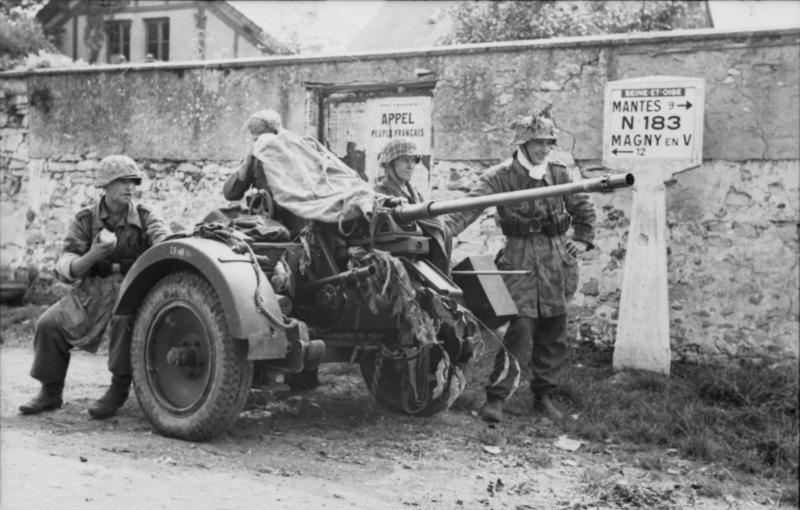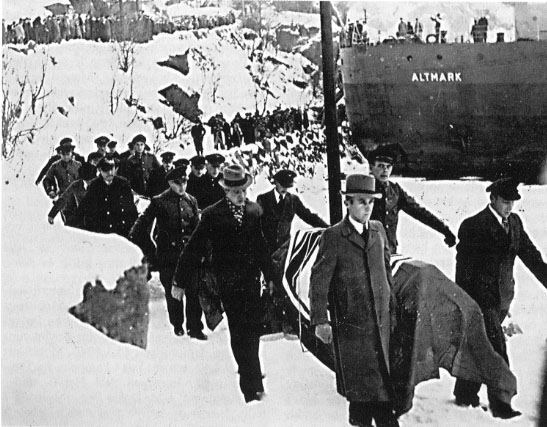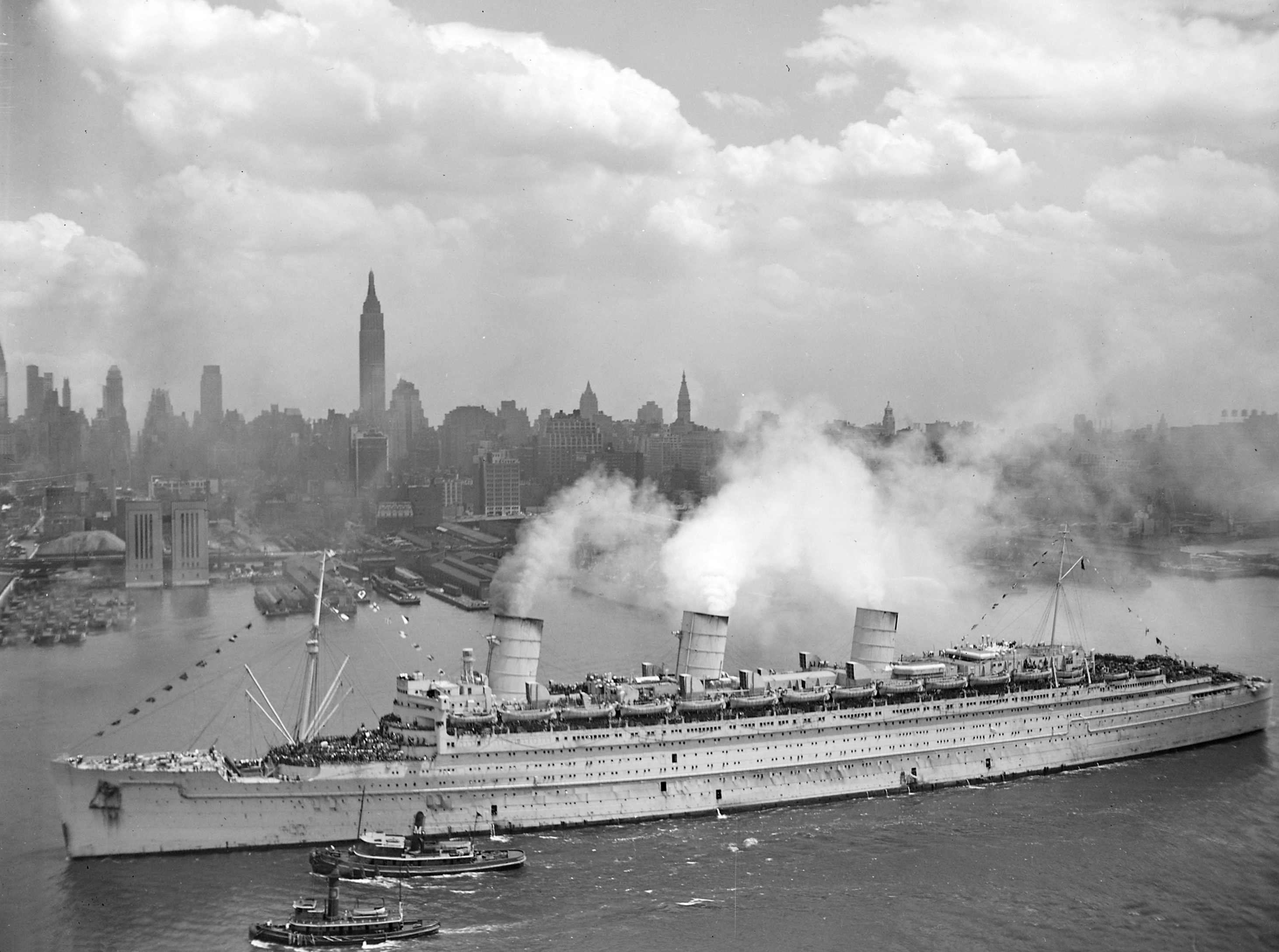|
MV Alstertor
MV ''Alstertor'' was a refrigerated cargo ship built in 1938 for Anders Jahres Rederi A/S of Sandefjord, Norway by Oresundsvarvet, Landskrona, Sweden as MV ''Rose''. In 1939 a German ship-owning firm, , bought her to transport fruit between Santos, Brazil and Hamburg. In 1940 the Kriegsmarine requisitioned her and converted her into a support ship for naval operations in the Atlantic. Description The ship was long, with a beam of . She had a depth of . She was assessed as , . The ship was powered by a Burmeister & Wain 9-50VF-90 two-stroke Single Cycle, Single Action diesel engine, which had nine cylinders of diameter by stroke driving a single screw propeller. Rated at 606 nhp, it could propel her at . Early history Öresundsvarvet built ''Rose'' as yard number 38 at Landskrona, Sweden for Anders Jahre Reederi, Sandefjord, Norway. She was launched on 22 January 1938, and completed on 6 June. She was registered at Sandefjord and her call sign was LJWX. In 1939 R ... [...More Info...] [...Related Items...] OR: [Wikipedia] [Google] [Baidu] |
Anders Jahre
Anders August Jahre (28 May 1891 – 26 February 1982) was a Norwegian shipping magnate. Jahre was educated in law, and worked as a lawyer in Sandefjord from 1916 until 1928. Meanwhile, he was also involved in the whaling industry, and he founded the whaling company A/S Kosmos in 1928, operating out of Sandefjord. He also established Jahres Kjemiske Fabrikker, a processor of whale blubber, as well as establishing a passenger ferry line between Oslo and Kiel. He contributed significantly to the development of the city of Sandefjord. Among other things, he financed the building of the new town hall. He was a major philanthropist, and was honoured with The Royal Norwegian Order of St. Olav in 1950 and 1962, as well as an honorary professorship at the University of Oslo in 1961. After his death, however, there was much controversy surrounding alleged tax fraud and hidden funds in overseas accounts. In 1984, the Norwegian government put forward a tax claim against the Jahre estate. A s ... [...More Info...] [...Related Items...] OR: [Wikipedia] [Google] [Baidu] |
Yard Number
__NOTOC__ M N O P Q R ... [...More Info...] [...Related Items...] OR: [Wikipedia] [Google] [Baidu] |
2 Cm Flak 30/38/Flakvierling
The Flak 30 (''Flugzeugabwehrkanone 30'') and improved Flak 38 were 20 mm anti-aircraft guns used by various German forces throughout World War II. It was not only the primary German light anti-aircraft gun but by far the most numerously produced German artillery piece throughout the war. It was produced in a variety of models, notably the Flakvierling 38 which combined four Flak 38 autocannons onto a single carriage. Development The Germans fielded the unrelated early 2 cm Flak 28 just after World War I, but the Treaty of Versailles outlawed these weapons and they were sold to Switzerland. The original Flak 30 design was developed from the Solothurn ST-5 as a project for the Kriegsmarine, which produced the 20 mm C/30. The gun fired the "Long Solothurn", a 20 × 138 mm belted cartridge that had been developed for the ST-5 and was one of the more powerful 20 mm rounds. The C/30, featuring a barrel length of 65 calibres, had a fire rate of a ... [...More Info...] [...Related Items...] OR: [Wikipedia] [Google] [Baidu] |
Hammerfest (town)
Hammerfest or Hámmárfeasta is a town that is also the administrative centre of Hammerfest Municipality in Troms og Finnmark county, Norway. It is located on the northwestern coast of the island of Kvaløya, just north of the village of Rypefjord and southwest of the village of Forsøl. The town has a population (2017) of 8,052 which gives the town a population density of . The town has an ice-free harbor, including the nearby island of Melkøya which is home to a natural gas processing station. It processes gas from the Snøhvit gas field in the Barents Sea. Rypefjord is a suburb to the south of the town. The main church for the town and municipality is Hammerfest Church. The "midnight sun" is above the horizon from 15 May to 31 July, and the period with continuous daylight lasts a bit longer. Polar night, on the other hand, lasts from 23 November to 19 January. The town is visited by cruise ships from all over the world each summer. In 2016, there were about 19,000 touri ... [...More Info...] [...Related Items...] OR: [Wikipedia] [Google] [Baidu] |
German Labour Front
The German Labour Front (german: Deutsche Arbeitsfront, ; DAF) was the labour organisation under the Nazi Party which replaced the various independent trade unions in Germany during Adolf Hitler's rise to power. History As early as March 1933, two months after Hitler was appointed Chancellor, the Sturmabteilung began to attack trade union offices without legal consequences. Several union offices were occupied, their furnishings were destroyed, their documents were stolen or burned, and union members were beaten and in some cases killed; the police ignored these attacks and declared itself without jurisdiction. These early attacks occurred at random, carried out spontaneously by rank-and-file Nazis motivated by a desire to destroy "Marxism", and the Nazi Party leadership only implemented a general policy in May. On 2 May, 1933, trade union headquarters throughout Germany were occupied, their funds were confiscated, and the unions were officially abolished and their leaders arreste ... [...More Info...] [...Related Items...] OR: [Wikipedia] [Google] [Baidu] |
Narvik (town)
Narvik is a town and the administrative centre of Narvik Municipality in Nordland county, Norway. The town is located along the Ofotfjorden in the Ofoten region. The town lies on a peninsula located between the Rombaken fjord and the Beisfjorden. The European route E06 highway runs through the Beisfjord Bridge and Hålogaland Bridge crossing the two small fjords surrounding the town. The town has a population (2018) of 14,141 which gives the town a population density of . Narvik Church is the main church for the town. Narvik is a commercial centre for the region. Narvik University College has approximately 1,200 students. There are some high-tech businesses in Narvik (among them Natech). Etymology Narvik is named after the old ''Narvik'' farm ("Narduigh" – 1567), since the town is built on its ground. The Old Norse form of the port was probably ''*Knarravík''. The first element is the genitive pluralis of '' knarr'' which means 'merchant ship' and the last element is ... [...More Info...] [...Related Items...] OR: [Wikipedia] [Google] [Baidu] |
Gebirgsjäger
''Gebirgsjäger'' () are the light infantry part of the alpine or mountain troops (''Gebirgstruppe'') of Germany, Austria and Switzerland. The word '' Jäger'' (meaning "hunter" or "huntsman") is a characteristic term used for light infantry in German speaking countries. Origins The mountain infantry of Austria have their roots in the three ''Landesschützen'' regiments of the Austro-Hungarian Empire. The mountain infantry of modern Germany carry on certain traditions of the German Alpenkorps (Alpine corps) of World War I. Both countries' mountain infantry share the Edelweiß insignia, established in 1907 as a symbol of the Austro-Hungarian ''Landesschützen'' regiments by Emperor Franz Joseph I. These troops wore the edelweiss on the uniform collar. When the '' Alpenkorps'' served alongside the ''Landesschützen'' on Austria's southern frontier against Italian forces from May 1915, the ''Landesschützen'' honoured the men of the ''Alpenkorps'' by awarding them their own insi ... [...More Info...] [...Related Items...] OR: [Wikipedia] [Google] [Baidu] |
Trondheim (city)
Trondheim ( , , ; sma, Tråante), historically Kaupangen, Nidaros and Trondhjem (), is a city and municipality in Trøndelag county, Norway. As of 2020, it had a population of 205,332, was the third most populous municipality in Norway, and was the fourth largest urban area. Trondheim lies on the south shore of Trondheim Fjord at the mouth of the River Nidelva. Among the major technology-oriented institutions headquartered in Trondheim are the Norwegian University of Science and Technology (NTNU), the Foundation for Scientific and Industrial Research (SINTEF), and St. Olavs University Hospital. The settlement was founded in 997 as a trading post, and it served as the capital of Norway during the Viking Age until 1217. From 1152 to 1537, the city was the seat of the Catholic Archdiocese of Nidaros; it then became, and has remained, the seat of the Lutheran Diocese of Nidaros, and the site of the Nidaros Cathedral. It was incorporated in 1838. The current municipality was fo ... [...More Info...] [...Related Items...] OR: [Wikipedia] [Google] [Baidu] |
Stavanger (city)
Stavanger (, , US usually , ) is a city and municipality in Norway. It is the fourth largest city and third largest metropolitan area in Norway (through conurbation with neighboring Sandnes) and the administrative center of Rogaland county. The municipality is the fourth most populous in Norway. Located on the Stavanger Peninsula in southwest Norway, Stavanger counts its official founding year as 1125, the year the Stavanger Cathedral was completed. Stavanger's core is to a large degree 18th- and 19th-century wooden houses that are protected and considered part of the city's cultural heritage. This has caused the town center and inner city to retain a small-town character with an unusually high ratio of detached houses, and has contributed significantly to spreading the city's population growth to outlying parts of Greater Stavanger. The city's population rapidly grew in the late 20th century due to its oil industry. Stavanger is known today as the Oil Capital of Norway. Nor ... [...More Info...] [...Related Items...] OR: [Wikipedia] [Google] [Baidu] |
Ammunition
Ammunition (informally ammo) is the material fired, scattered, dropped, or detonated from any weapon or weapon system. Ammunition is both expendable weapons (e.g., bombs, missiles, grenades, land mines) and the component parts of other weapons that create the effect on a target (e.g., bullets and Warhead, warheads). The purpose of ammunition is to project a force against a selected Targeting (warfare), target to have an effect (usually, but not always, lethal). An example of ammunition is the firearm Cartridge (firearms), cartridge, which includes all components required to deliver the weapon effect in a single package. Until the 20th century, black powder was the most common propellant used but has now been replaced in nearly all cases by modern compounds. Ammunition comes in a great range of sizes and types and is often designed to work only in specific weapons systems. However, there are internationally recognized standards for certain ammunition types (e.g., 5.56×45mm N ... [...More Info...] [...Related Items...] OR: [Wikipedia] [Google] [Baidu] |
Operation Weserübung
Operation Weserübung (german: Unternehmen Weserübung , , 9 April – 10 June 1940) was Germany's assault on Denmark and Norway during the Second World War and the opening operation of the Norwegian Campaign. In the early morning of 9 April 1940 (''Wesertag'', "Weser Day"), Germany occupied Denmark and invaded Norway, ostensibly as a preventive manoeuvre against a planned, and openly discussed, French-British occupation of Norway known as Plan R 4 (actually developed as a response to any German aggression against Norway). After the occupation of Denmark (the Danish military was ordered to stand down as Denmark did not declare war with Germany), envoys of the Germans informed the governments of Denmark and Norway that the ''Wehrmacht'' had come to protect the countries' neutrality against Franco-British aggression. Significant differences in geography, location and climate between the two nations made the actual military operations very dissimilar. The invasion fleet's n ... [...More Info...] [...Related Items...] OR: [Wikipedia] [Google] [Baidu] |
Troopship
A troopship (also troop ship or troop transport or trooper) is a ship used to carry soldiers, either in peacetime or wartime. Troopships were often drafted from commercial shipping fleets, and were unable land troops directly on shore, typically loading and unloading at a seaport or onto smaller vessels, either tenders or barges. Attack transports, a variant of ocean-going troopship adapted to transporting invasion forces ashore, carry their own fleet of landing craft. Landing ships beach themselves and bring their troops directly ashore. History Ships to transport troops were used in Antiquity. Ancient Rome used the navis lusoria, a small vessel powered by rowers and sail, to move soldiers on the Rhine and Danube. The modern troopship has as long a history as passenger ships do, as most maritime nations enlisted their support in military operations (either by leasing the vessels or by impressing them into service) when their normal naval forces were deemed insufficient ... [...More Info...] [...Related Items...] OR: [Wikipedia] [Google] [Baidu] |







